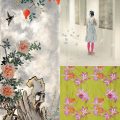What could be more attractive than a secret?only the opportunity to lift at least some of the veil over it. This is exactly the kind of mystery that the distant Chinese Empire remained for the inhabitants of Europe in the 18th century. Fabulously rich, shrouded in the haze of centuries, closed to outsiders - it turned into the image of an ideal country in the minds of Europeans. Made in Cnina One of the first to succumb to the exotic charm of China was the English Queen Elizabeth I and allowed pirates to plunder Spanish and Portuguese ships returning home with overseas treasures. With her light hand, England, and then the whole of Europe, was engulfed in a real craze, which received the French name "chinoiserie", or Chineseness. Unseen before porcelain, lacquerware, silk, furniture, screens and wallpaper with characteristic motifs became the latest fashion. Not a single palace, not a single noble house could do without at least one "room". In rich estates, Chinese pavilions were built, crowned with "pagoda" roofs. And even gardens were laid out in the Chinese style with exotic plants brought from the Celestial Empire.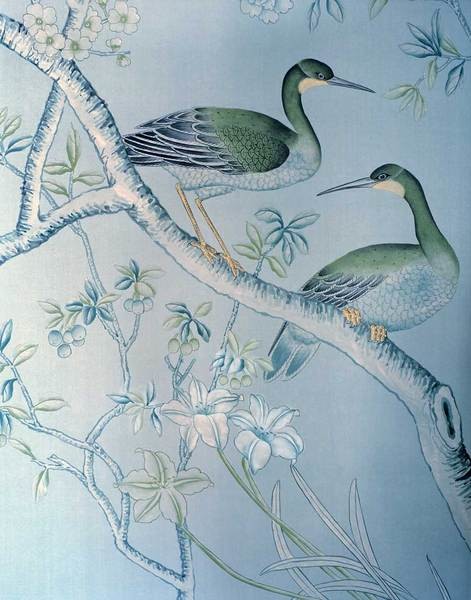 Chinese style in the interior
Chinese style in the interior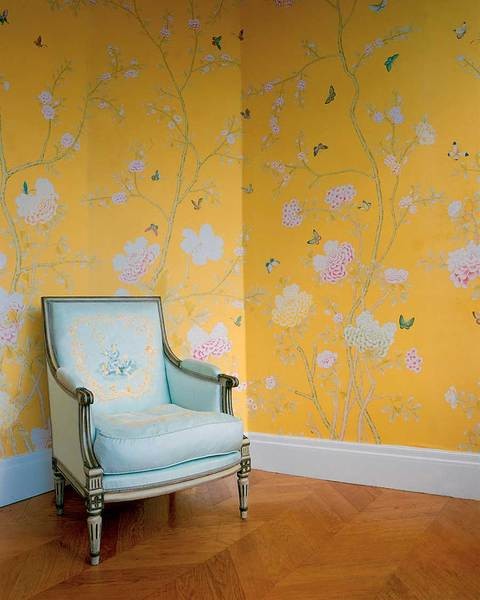 Chinese-style wallpapers
Chinese-style wallpapers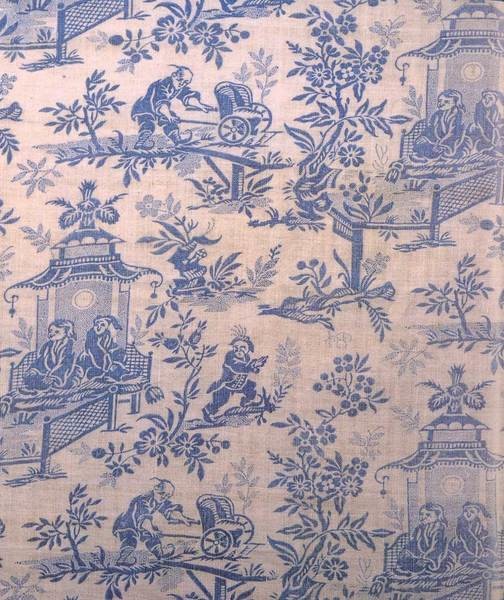
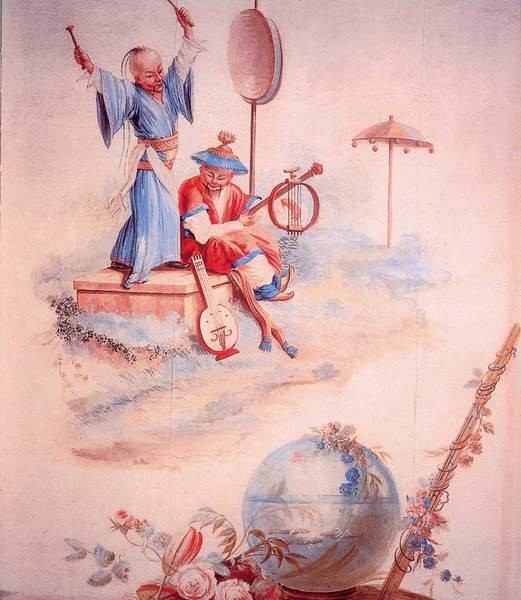
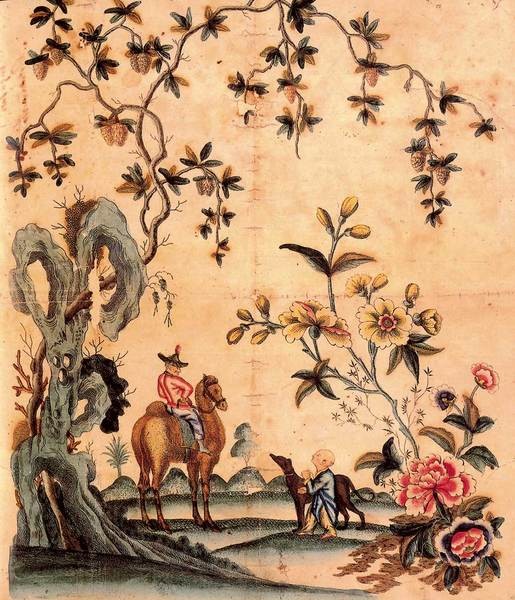
- Photo 1. Askew wallpaper from the Chinoiserie collection, hand painted on silk, de Gournay.
- Photo 2. Wallpaper Chelsea from the Chinoiserie collection, hand painted on silk, de Gournay.
- Photo 3. Fragment of Jouy fabric, 1760-1764. The new technology made the Jouy manufactory famous.
- Photo 4. Fragment of decorative painting in the Chinese salon, Stromsholm Palace, Sweden, second half of the 18th century.
- Photo 5. Paper wallpaper, hand-painted in the spirit of English "chinoiserie", 1770.
The desired trophy is one of the most honorable places inряду «истинно китайских ценностей» занимали расписанные вручную обои. Подлинники стоили огромных денег, их ждали, за ними «гонялись». Англичане ошибочно называли эти обои индийскими, потому что ввозились они Ост-Индской компанией, получившей в 1600 году от королевы право монопольной торговли с Поднебесной. Графиня Килдейр писала в 1775 году мужу в Лондон: «Дорогой, не забудь про индийские обои и, если увидишь те, что тебе понравятся, — покупай! Я не стала бы отводить под это более трех комнат, хотя ты знаешь, что мы должны сделать четыре». Бедная графиня! Чувствуется, что будь ее воля, она бы оклеила «китайской красотой» весь дом, но из-за боязни показаться мужу слишком расточительной не решалась сказать об этом напрямую. Китайскому нашествию сдались без боя европейские монархи. Чтобы убедиться в этом, можно посетить Доттинхольм (Швеция), Королевский Брайтонский павильон (Англия), Сан-Суси (Потсдам, Германия), Шарлоттенбург (Берлин), Ораиенбаум (Санкт-Петербург).Как у нас в садочке На заморских обоях изображались птицы, деревья с причудливо изогнутыми ветками и незнакомые европейцам цветы. Сэр Джозеф Бэнкс, советник Королевского ботанического сада Кью-Гарден, записал в своем журнале в 1771 году: «Некоторые обычные для Китая растения, например бамбук, изображены на обоях правдоподобнее, чем в работах лучших ботаников, из тех, что мне приходилось видеть». Другие представители китайской флоры, часто появлявшиеся на обоях и во многом благодаря этому завоевавшие любовь европейских садоводов, — древовидные пионы, камелии и гортензии. Среди всего этого цветущего великолепия порхали попугаи, слетались на водопой журавли, важно расхаживали фазаны и павлины. В 1806 году возлюбленная английского принца леди Гертфорд решила, что на китайских обоях, выбранных для ее гостиной в Тэмпл-Ньюсэм, недостаточно птиц, и обратилась за помощью к первому тому популярного в то время атласа Дж. Одубона «Птицы Америки», откуда собственноручно вырезала 25 самых красивых пернатых. Наклеила она их очень удачно — обман обнаружился только в 1968 году. Так китайские птицы получили соседей, с которыми в реальной жизни никогда не встречались. Но кого, кроме зоологов, могла интересовать фактическая достоверность? Главное было создать на стенах прекрасный экзотический сад, подобный библейскому Эдему.Ненаучная фантастика Что оставалось делать европейским мастерам? Взять курс на Китай и начать копировать восточные образцы. В самом невыгодном положении оказалась Франция, которая, как назло, не имела прямых торговых контактов с Китаем. То, что в результате получалось, было прекрасно, но ничего общего с настоящим Китаем не имело. На полотнах появлялись пасторальные сценки, где вместо галантных пастушков и пастушек в изящных куртуазных позах застывали китаянки с плоскими зонтиками и китайцы в треугольных шляпах. Наложницы и мандарины сильно смахивали на переодетых для бала-маскарада придворных. Иногда роль китайцев играли ряженые обезьянки —- такой был неполиткорректный юмор в эпоху рококо. Но соотечественники были довольны — отпала необходимость ждать возвращения далеких экспедиций. А какой он, Китай, на самом деле — кто его знает! 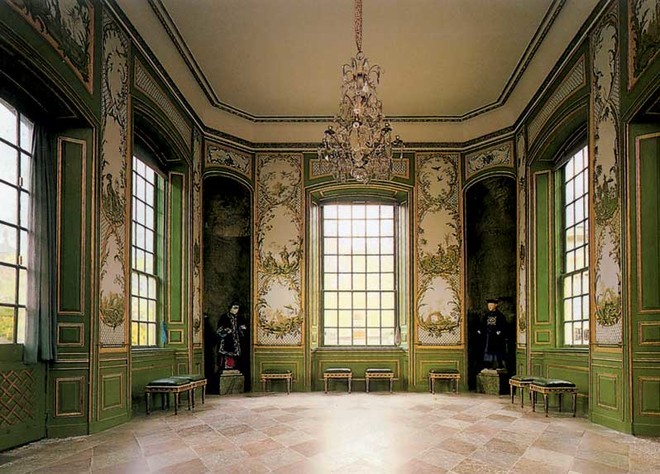
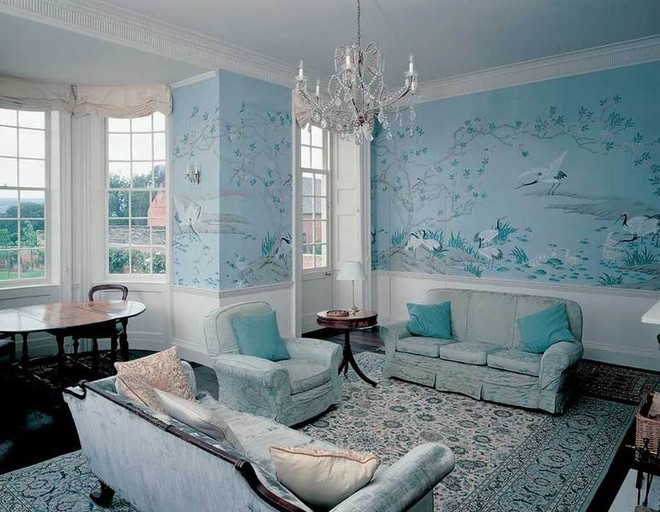
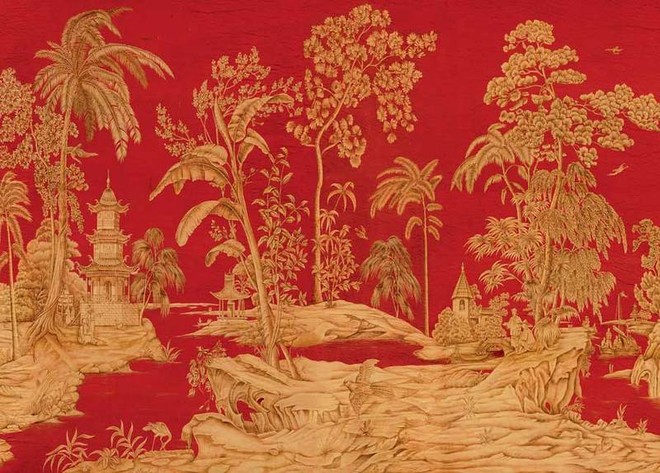
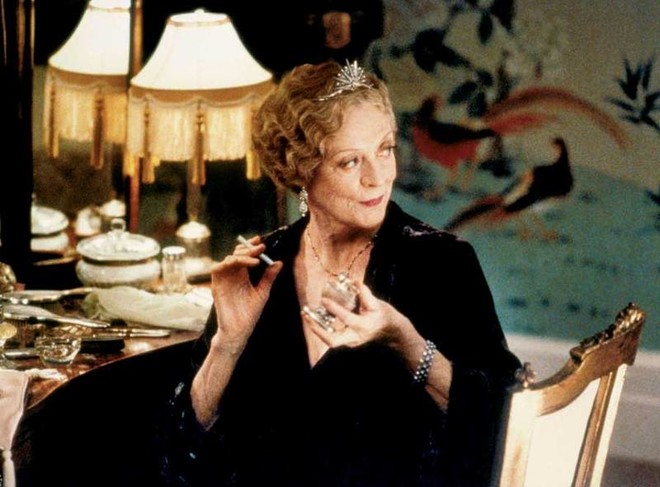
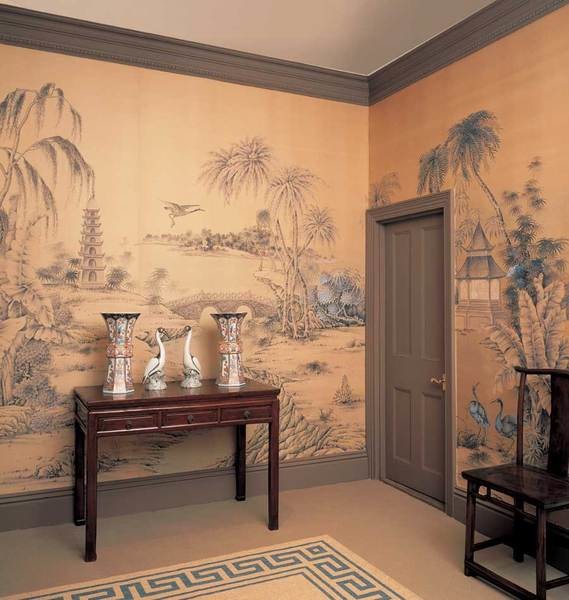
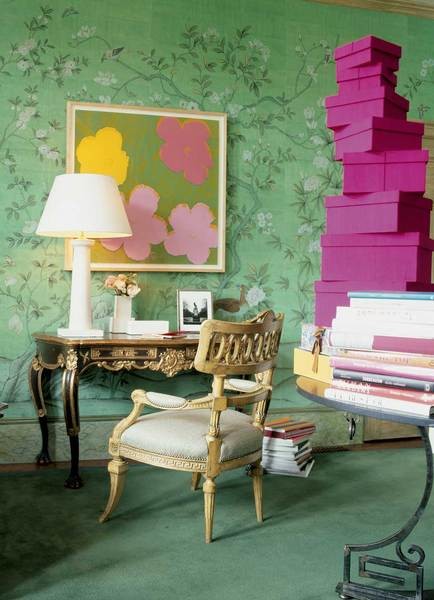
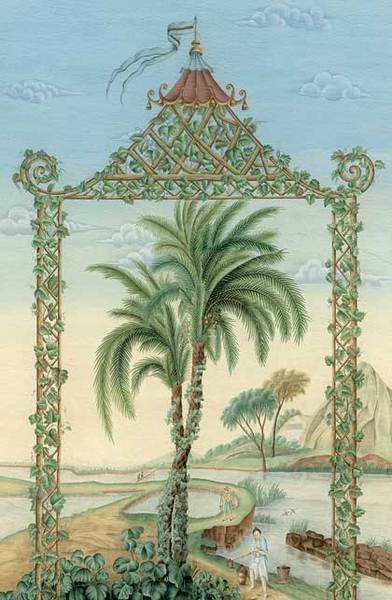
- Photo 1. Green salon in the Chinese pavilion "Kin" at the court of the Swedish king, Drottningholm, 18th century.
- Photo 2. Wallpapers Cranes from the collection of Chinoiserie, hand-painted on silk, de Gourny.
- Photo 3. Hand-made wallpaper from the Exotic Chinoiserie collection, Iksel.
- Photo 4. Still from the film "Gosford Park" (2001). The walls in the bedroom of Maggie Smith's character are covered with de Gournay wallpaper. They help recreate the atmosphere of a luxurious English estate of the 1930s.
- Photo 5. Wallpaper Oriental Landscape from the Chinoiserie collection, hand-painted on silk, de Gournay.
- Photo 6. Askew wallpaper from the Chinoiserie collection, hand-painted on aged India Tea Paper, de Gournay.
- Photo 7. Decorative panels, hand-printed with gouache on watercolor paper, from the Treillage Chinoiserie collection, Iksel.
Many of the themes in the Chinoiserie collection were originallywere developed by De Gourney designers for the restoration of historical interiors. To give the wallpaper an authentic look, the De Gourney company uses silk and a special base, India Tra Paper. Each of its canvases is glued by hand from many squares of aged, faded paper. The company's clients at different times included the Oppenheimer family, J.K. Rowling, Liv Tyler, Kate Moss, Jude Law, the ruler of Qatar and the prince of Saudi Arabia. The secret of the company In China, wallpaper was hand-painted on silk or paper using brushes and paints. There was also a cheaper, but no less effective option - paper wallpaper, on which the pattern was applied by hand printing. Individual canvases or sheets (there were 25-40 of them in a set) were joined end to end, creating a panorama of a luxurious garden in the room. The plot panels were enclosed in frames - and they could be easily changed if desired. Satin and embroidered fabrics from India were also used. In the second half of the 18th century, the walls of Chinese rooms were dressed in printed cotton and linen. This happened after the technology of printing from wooden boards, which came from the East, was improved by enterprising Frenchmen. They began to make prints from copper engraved forms - such fabric was called Toile de Jouy (canvas from Jouy) and was recognizable for its single-color pattern - of course, in the Chinese style. However, printed fabrics were also a scarce commodity and far from cheap. The situation could only be saved by the mass production of printed wallpaper, which gained momentum in the first half of the 19th century. It could have been - if the Chinese myth had not been destined to be shattered. The fairy tale - end In the 1830s, the East India Monopoly came to an end, the curtain rose and the romantic haze over China dissipated. It became clear that the distant eastern empire was a country like any other, not the magical land it had seemed from a distance. However, Chinese exoticism still haunts the homes of romantically inclined Europeans. The motifs are usually borrowed from the most famous historical examples, which can still be admired in palaces and museums. Sometimes fragments of beautiful wallpaper decors are found in archives or bought at auctions, and then modern versions of past masterpieces are created on their basis using traditional Chinese painting and hand printing techniques. Thus, the English brand de Gournay is famous for its historical collection, which includes copies of wallpaper from the ancestral castle of Walter Scott, the residence of the English royal family in Hampton Court and the Marble Hill mansion, which belonged to George II's lover Henrietta Howard. All wallpaper is hand-painted exactly as it was three centuries ago.




